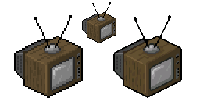Image scaling

Image scaling is basically making pictures bigger or smaller. When we make a picture bigger, it's called zooming in, and when we make it smaller, it's called zooming out. Think of it like a toy block that you can make bigger or smaller by stretching it with your hands.
Sometimes we need to change the size of a picture to fit it into a smaller space, like when we need to post a photo on social media or when we want to print it in a smaller size. In these cases, we use image scaling to make the picture fit the smaller space without making it look weird or blurry.
When we zoom in on a picture, we're actually making it larger by adding more pixels to it. Pixels are tiny dots that make up the picture, and the more dots you have, the clearer the picture looks. But when we add more pixels, we also need more space to store the picture, which means the file size also gets bigger.
On the other hand, when we zoom out on a picture, we're actually removing pixels from it. This means the picture becomes smaller, but also loses some of its detail because we're taking away some of the dots that make up the picture.
So, image scaling is like playing with toy blocks, but with pictures instead. It helps us to make sure our pictures fit the spaces we need them to, and we can make them look bigger or smaller without making them blurry or losing too much detail.
Sometimes we need to change the size of a picture to fit it into a smaller space, like when we need to post a photo on social media or when we want to print it in a smaller size. In these cases, we use image scaling to make the picture fit the smaller space without making it look weird or blurry.
When we zoom in on a picture, we're actually making it larger by adding more pixels to it. Pixels are tiny dots that make up the picture, and the more dots you have, the clearer the picture looks. But when we add more pixels, we also need more space to store the picture, which means the file size also gets bigger.
On the other hand, when we zoom out on a picture, we're actually removing pixels from it. This means the picture becomes smaller, but also loses some of its detail because we're taking away some of the dots that make up the picture.
So, image scaling is like playing with toy blocks, but with pictures instead. It helps us to make sure our pictures fit the spaces we need them to, and we can make them look bigger or smaller without making them blurry or losing too much detail.
Related topics others have asked about:
